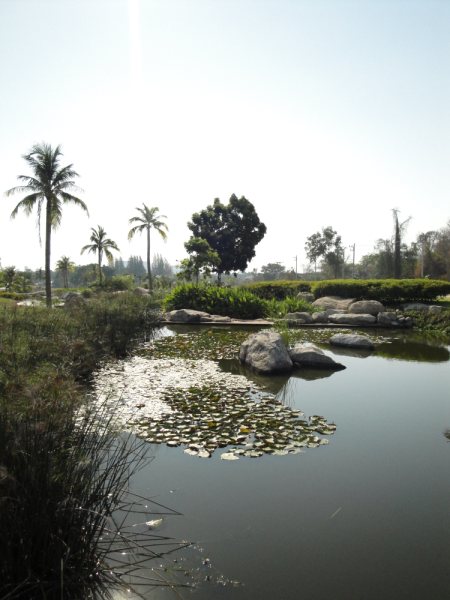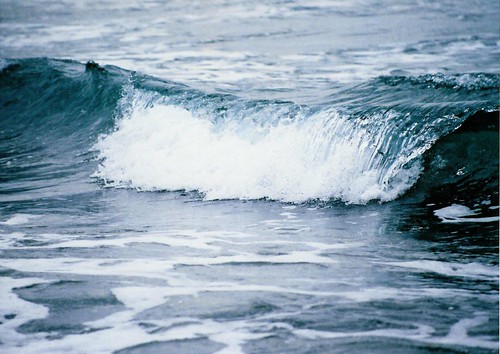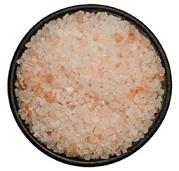An article on salt can be as easy or as complicated as the writer wishes. A simple, poorly researched piece might tell you that the UK Food Standards Agency reports that adults need 6 grams of salt per day, a child needs 3 grams. They could then write some ’blah’ about cellular balance, heart disease, water retention; job done.
The equivalent American body recommends about 2.5 grams a day; less than half the UK amount. But then the average New Yorker consumes 16 grams per day so their job is more urgent. Since common salt is linked to a host of diseases, all the medical fraternity have now been programmed to tell you to cut your salt consumption. But is this right? And what about all those non-common salts; like Sea Salt, Himalayan Salt, Dead Sea salt, Epsom Salts and the rest? What is the relevance to your health?
Salt, natural salt, and salts; an article by Chris Woollams
Sodium, potassium and magnesium
In my book, The Rainbow Diet, I explain that the ideal diet is a colourful, varied one; a fusion between the French and the Mediterranean Diets. I warn of the perils of sodium; and advocate the benefits of potassium and magnesium.
You should consume potassium at a level 5 times the amount of sodium consumed. Why? Because inside every cell in your body are power stations, and they thrive on potassium. They are able to use sodium instead of potassium, but the end result is not as efficient. The waste products are sodium compounds which are more acidic than the intended potassium ones. As a result the cell turns a little more acid and works less efficiently. As the energy producing reactions continue, a downward spiral sets in. Ever more acidic, your power stations produce less and less energy. As their batteries wear out so certain chemical reactions producing proteins and repairing genetic damage simply cannot function. The lights go out. Weakness sets in; disease can occur; even cancer.
Under even the healthiest conditions, you will have more sodium than potassium in your blood. Left to natural osmosis, the sodium would simply seep into your cells. But the cells have a defence; a pump that pumps out sodium and pumps in potassium. This pump is driven by magnesium. 40 per cent of Americans are deficient in magnesium. A lack of magnesium can thus also cause acid cells and power stations. And illness.

Salerium
In Roman times, salt was precious. People were even paid in salt, the word salary being derived from the Latin word salerium, sel in French, salt to you and me. Salt is an essential preservative. The French cook their ducks, chop them up and jam them into glass jars packed with fat and salt. They then call it confit de canard and charge lots of money for a dish which was based around a desire to store food for leaner times. We salt bacon, pork, fish; the list is endless.
As animals, our ancestors and other mammals went days on end without consuming salt, until they came to a salt lick, and binged. So something inside our DNA tells us we need salt. Surely salt can’t be that bad for you?
The answer depends on which salt you are talking about, as we shall see.
Salts and minerals
Magnesium sulphate is a salt. Calcium carbonate is a salt. Potassium permanganate is a salt. Sodium chloride is a salt.
Note the wording .. is a salt. There are thousands of chemical compounds that are correctly termed salts. The Utah salt flats is one of the major sources of such salts in the world, and health companies take the salts and process them by removing the stuff you don’t need to provide you with the stuff you do - essential minerals, in liquid and tablet form.
The rationale is clear: You don’t go to salt licks, you don’t receive salt as payment, you still need the minerals but your foods contain less and less of them. Two research surveys on the UK Governments own figures showed losses of up to 70 per cent in essential minerals from our foods over the last 60 years. Similar studies in the USA (and even a note in a Senate Hearing) confirmed that because our soils were becoming depleted, we should take mineral supplements.
Confused? One minute I am talking about salt, the next I am talking about minerals and supplements?
And here is the fundamental point: The salt lick, the salt of the Romans, the salt that made Salt Lake City famous is a compound containing a vast number of different chemical compounds, which may be referred to variously as (crystalline) salts, or mineral salts or minerals.

Table salt
These salts cannot (must not) be confused with common table salt, which is the salt equivalent of a refined vegetable oil or a high street synthetic multivitamin. It has been industrially refined, heated, even bleached and contains just one chemical compound, sodium chloride, (possibly with added iodine). It has little in common with the salt of the Romans, salt licks or salt flats where the sodium content may be less than 80 per cent and a host of other mineral compounds may be found.
Salt and spas
The original ’spas’ where people bathed and even drank the waters, were often mysterious, even miraculous, places. Many actually had water which was iron-rich because of the dissolved ferrous salts. The waters commonly helped people beat illnesses where a lack of iron lay at the root, like anaemia; although, at the time bathers hadn’t the foggiest clue why these waters were medicinal. Other spas were magnesium-rich, helping detox the body, draw impurities through the skin and clean and strengthen liver function. And this is how ancient spas came to have almost miraculous healing abilities. Have we learned anything from this for today’s world?
Salt and salts
And so we come full circle to salts. To some extent you can liken common table salt to a toxic poison, a fact compounded by other sodium salts commonly used - preservatives like nitrites and nitrates; or taste enhancers like mono-sodium glutamate (MSG).
Is Sea salt any better? Well in that it is not refined, heated and generally messed with, yes. But largely the main ingredient (usually around 97%) is still sodium chloride. At least 3 per cent of the salt does have valuable trace minerals in it. And they are bio-available as natural compounds. However, the bad news is that the great majority of sea salts have now been messed with and refined in industrial processes, leaving possibly only 10 per cent of this form as genuinely all natural sea salt! And, depending upon the source of your sea salt, pollution is an increasing threat.
All natural sea salt should have significant benefits. The Okinawans who have the highest longevity in the world are surrounded by coral seas. Their diet derives a great benefit from the minerals in the surrounding sea, which is nutrient (mineral) rich. If you need salt with your food, then it is Natural Sea Salt over chemical table salt everyday. Its an easy switch.
Further up the health ladder comes Dead Sea Salt. Here the sodium chloride content is usually only 12 and 20 per cent depending upon the location (although some samples have shown sodium chloride levels as low as 2.5%). Tourists flock to float in the sea, which has about 10 times the salt concentration of the Atlantic Ocean. The mud that comes from the rivers flowing into the Dead Sea also brings a host of minerals in oxide form. The mineral salts are bio-available and all natural and the highest mineral present is magnesium, followed by sodium, calcium and potassium. The muds add others including sulphur, iron, phosphorus and calcium. The salt compounds are not all chlorides and oxides by any means; bromides feature prominently.
People since early Egyptian times have come to bathe in the therapeutic waters. which have been much studied and reputed to help diseases from Rheumatoid Arthritis, to Psoriasis, Osteoarthritis, allergies and liver complaints. Several studies have even shown a reduction in wrinkling!
And here lies an important point: Your skin is a carrier, not a barrier. (Otherwise there would be little point in the medical profession creating drug patches, nicotine patches or HRT patches.) Some of the minerals you bathe in are absorbed, and the waters also invigorate and cleanse your skin. (You can even obtain scrubs too)
Further afield there are Himalayan Salts. This is a form of halite or rock salt. Other rock salts are found from Utah to Hawaii, and Poland to Peru, being typically pinkish due to their iron content. Himalayan salts come from an area of Pakistan, south of the Himalayas, and are commonly mined at the Khwra Salt mines. They may be used as an alternative to table salt, or you can bathe in them. A German analysis showed that 10 minerals made up 97% of the salt, sodium chloride being typically about 80%.

However, because of the location, Himalayan rock salt is often claimed to be the purest salt available, free from all pollutants and toxins. Claims include its content, even if only in trace amounts, of all the important minerals for your health.
Next, there are Epsom Salts magnesium sulphate; one grade for bathing in to relax and draw out impurities; a higher grade to take as a drink to clean out the liver (it is part of William Kelleys Liver Flush). Originally distilled from the spring waters flowing through the chalk of the North Downs, magnesium sulphate absorbs water readily. A 2004 research study showed that it could be readily absorbed through the skin. and whilst Epsom Salts seem particularly good in a relaxing and soothing way for bathing, they have been found to help overcome skin infections, blemishes, skin ulcers and even herpes and can be used in cases of premature birth and palsey.

Another salt to consider is Sodium Bicarbonate; when drunk this can kill yeasts and microbes and help to alkalise the body. There are even experts who believe it may help in the fight against cancer.
Salt Sellers
I would like to add a word of caution at the end of this article. In researching this article I have read some absolute clap-trap from quite respected people trying to market their wares. Over claims riddled with a lack of understanding of fundamental biochemistry seem to be the norm. Please be aware that Sodium Chloride can raise your blood pressure, cause hypertension and water retention, whatever form it comes in.
The important point is that salts - natural salts - have a multitude of potential benefits. You simply do not have to settle for industrialised, refined rubbish in this modern world.
So whether you are eating, drinking or bathing in them, choose your salts wisely. All salts were not created equal!
Natural Products you can trust
If you are looking for Salts (Himalayan Salts, Dead Sea Salts, Natural Sea Salt, Epsom Salts, for consumption, bathing, as scrubs and so on) then CLICK HERE to go to straight to the NATURAL SELECTION store - where only the very best will do.
********************************************
People who read this article, also read:
EPSOM SALTS - CLICK HERE to read the article
Magnesium - CLICK HERE to read the article
A Clean Efficient Liver - CLICK HERE to read the article
Please be clear: At CANCERactive we do not consider the above compound to be a cure for cancer, despite what the research says or experts doing the research may claim. The above, is an article on the compound from published research and expert opinion in the public domain. At CANCERactive we do not believe that any single compound (drug, vitamin, whatever) is a cure for cancer. We believe that people can significantly increase their personal odds of survival by building an Integrated Programme of treatments. Equally, cancer prevention is best practiced through a width of measures.